Human Trafficking UK Statistics, Facts, and Signs
Chances are that if you’re reading this now, you’re interested in learning some facts about human trafficking in all its forms, how to spot the signs, and what you can do to help.
Human trafficking in the UK is a massive problem, and contrary to what people believe, it isn’t something that just occurs in developing countries far far away.
In this article I will first define what human trafficking is, before providing some sobering human trafficking statistics, outlining the different types of human trafficking, and highlighting which signs you should look out for to identify possible victims of human trafficking.
Human Trafficking UK Statistics, Facts, and Signs
What is Human Trafficking?
Before we begin discussing the different types of human trafficking and modern slavery, it is important for us to know what those words really mean.
United Nations defines human trafficking as the ‘recruitment, transportation, transfer, harbouring, or receipt of persons by improper means (such as force, abduction, fraud, or coercion) for an improper purpose including forced labour or sexual exploitation.’
Human trafficking may include the transportation of a person but it does not have to.
The defining characteristic of human trafficking is exploitation. This means that human trafficking and human smuggling are different things. Human smuggling involves the transportation of a person into a given place and the deliberate evasion of immigration laws.

However, there is often overlap between the two as people who pay to be smuggled into a country (consensually), may later become victims of human trafficking due to their vulnerable status as an illegal immigrant or debt that they owe to the people smugglers.
Someone is a victim of slavery if they are: forced to work (through coercion or mental/physical threat); trapped and controlled by an ’employer’ (through physical/mental abuse or the threat of it); dehumanised and treated as a commodity or bought & sold as property or physically constrained and/or lacking in freedom of movement.
It should be noted that I will use the terms ‘human trafficking’ and ‘modern day slavery’ interchangeably throughout this post.
Human Trafficking Statistics
Although people often prefer victim testimony to statistics, I find that with human trafficking, the numbers are more shocking than anybody could ever imagine, and so I would like to share some of those numbers with you now.
It must be said that due to the nature of modern slavery, these numbers are all extremely conservative estimates. Not only can millions of people in conflict zones and refugee trails not be reached, but some countries (the Gulf states in particular) make it very difficult to gain access to migrant workers, and of course countless human trafficking victims remain hidden behind closed doors, invisible to everyone.
With that said, let us proceed.
40.3 million people are in modern slavery across the world. This is more than 3 times the number of people captured and sold as slaves between the 15 – 19 centuries (13 million).
10 million children are in slavery across the world.
Women and girls make up 71% of slavery victims.
Women and girls make up 99% of all victims of sexual exploitation.
4.8 million people are in forced into sexual exploitation.
The US generates $150 billion in illegal profits as a result of forced labour in the private economy.
90% of companies shipping shrimp to the US use bonded or forced labour.
There are 15.4 million people trapped in forced marriages.
There are an estimated 13,000 human trafficking victims in the UK.
My sources for these figures can be found here and here.

Types of Human Trafficking and Modern Day Slavery
Human trafficking can take many different forms, and most people are unaware of just how many types of human trafficking there are manifesting in the world today.
Below, I will outline the main examples of modern slavery, but bear in mind that people can be exploited in just about any situation imaginable and so this is by no means a complete list.
Types of Human Trafficking – Sex Trafficking
One of the most well-known types of human trafficking is sex trafficking or sexual exploitation, with an estimated 4.8 million sex slaves in the world today.
99% of sex trafficking victims are women and children, and sexual slavery occurs when victims are forced to engage in commercial sexual acts.
This type of human trafficking is especially lucrative to slave owners because they are able to ‘sell’ the victim multiple times each day, generating much more money than a drug, for example, which you can only sell once. Siddharth Kara, an expert on modern day slavery, estimates that traffickers earn around $36,000 per sex trafficking victim, with the average cost of a slave being around $450.
Sex trafficking victims are often women and children from impoverished communities in developing countries with little to no job prospects.
Oftentimes, the trafficker will be someone who used to live in the same village and will return home bragging about how much money they have working as a hostess, dancer or waitress abroad, convincing these girls that they should follow in her footsteps.
Other common ways in which women are recruited into sex trafficking are advertisements in magazines for waitressing jobs abroad (such as the Makler newspaper in Moldova), or the ‘lover boy’ technique, where a man will forge a relationship with a woman before forcing her to work as a prostitute.
Of course, with the first two examples, there is no hostess or waitressing job, and the girls have their passports taken from them and are sold into prostitution, often beaten and raped many times by the traffickers to break their spirits and ensure that they don’t try to escape. Because the traffickers often know where the victims come from, they threaten the victim that their families will be harmed if they try to run away, which scares the trafficking victim into submission.
Victims of sex trafficking can be found in any establishment selling sex, from brothels to escort agencies, massage parlours, Thai ping pong clubs, and strip clubs that provide ‘extras.’
There was even a Ukrainian modelling agency that was busted for being a child sex abuse ring.
You can anonymously report suspected instances of sex trafficking in the UK to Crime Stoppers on 0800 555 111.

Types of Human Trafficking – Forced Labour
Forced labour can be understood as any form of labour where the victim is working against their will and under threat, intimidation or coercion. This can include violence, but can also involve more subtle ways of manipulation such as taking away somebody’s passports, withholding their wages or threatening to report undocumented people to the authorities.
According to the International Labour Organisation’s Forced Labour Convention 1930, the definition of forced labour is ‘all work or service which is exacted from any person under the threat of a penalty and for which the person has not offered himself or herself voluntarily.’
Forced labour can be found in pretty much anywhere, including fruit and vegetable picking, hand car washes, nail bars, fishing boats (Thailand in particular is known for treating its fishermen as slaves) and construction sites. The lines between forced labour and bonded labour (which I will outline below) are extremely blurred.
Types of Human Trafficking – Bonded Labour
Bonded labour is used to describe a type of modern slavery where a debt bondage is in place and the individual is forced to work in order to pay off a debt (which is often exaggerated or even totally non-existent).
Bonded labour often occurs when a migrant owes a large sum of money to people smugglers for getting them into a country and now must repay the debt, or even to victims of sex trafficking who are told that they must work until they have made back the money that the slave owner paid for them (with the debt only increasing as interest is added and ‘expenses’ such as the victim’s food and shelter are added).
Sometimes people can even be born into bonded labour by inheriting the debt from their parents.
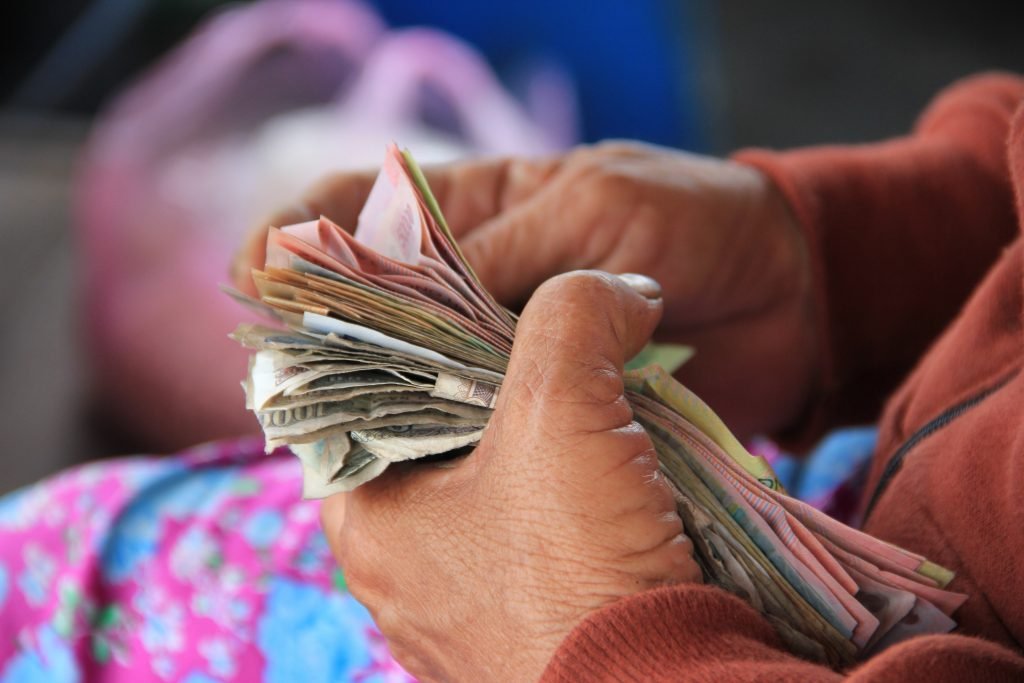
Types of Human Trafficking – Forced Marriage
When people think about human trafficking facts, not many people associate forced marriage with modern day slavery, but that is exactly what it is. It is estimated that 15.4 million people are victims of forced marriages. Oftentimes, girls as young as 6 are married off to much older men (sometimes for payment) who proceed to rape them, beat them and force them to work as domestic slaves.
This happens within rural communities in countries where early marriage is accepted, but we also see it amongst some communities in the UK, with first-generation migrants forcing their daughters into a marriage of their choosing, often to allow a distant relative in their home country to acquire British citizenship. The majority of victims of forced marriage in the UK are from Pakistan, Bangladesh and India.
Sadly, if a girl tries to refuse the marriage or escape from an abusive situation, her own family may even kill her for ‘dishonouring’ them. This is known as an ‘honour killing’ and I write extensively about honour killings and why they occur in this article.
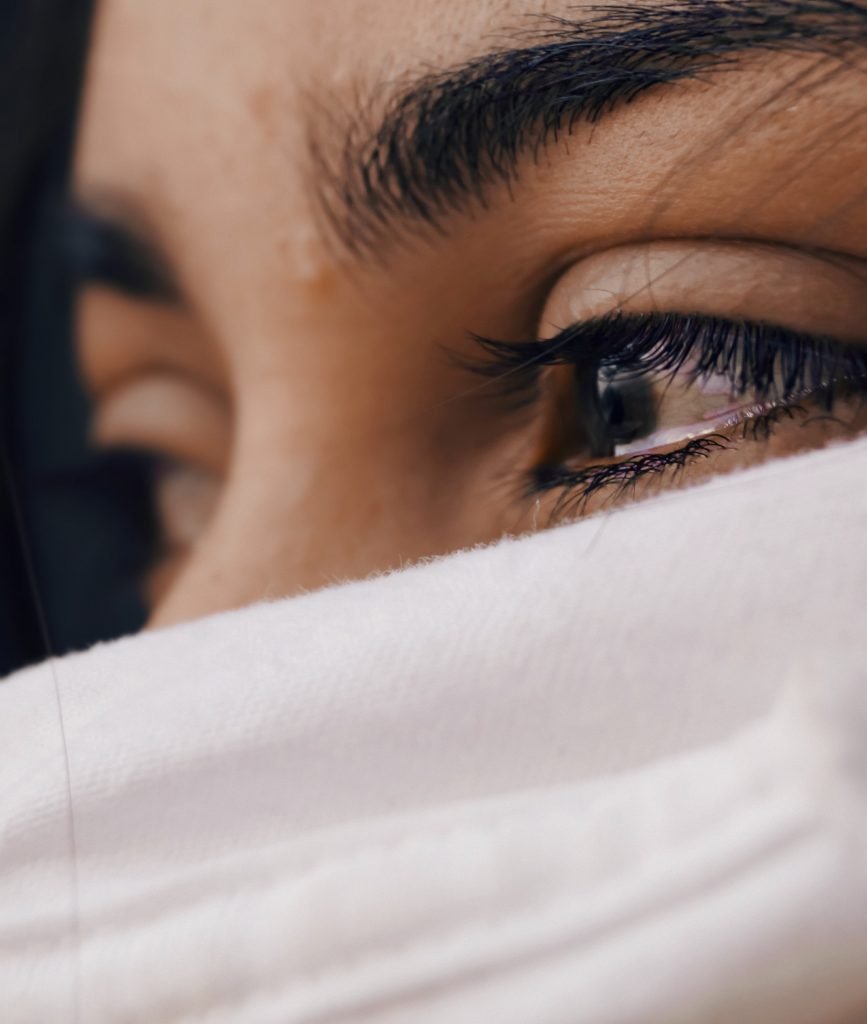
Types of Human Trafficking – Domestic Slavery
Domestic slavery is very common in countries such as Saudi Arabia and the United Arab Emirates, but we also see this type of slavery in the UK (usually perpetrated by Saudis and Emirates).
Domestic slavery involves individuals working in a private family home where they are forced to work long hours for little to no pay, and may be verbally, physically or sexually abused. Domestic slaves often have their passports or documents confiscated, and are not allowed to leave the house without their employers.
It is almost impossible to identify victims of domestic slavery as the abuse happens completely behind closed doors and the regular laws that are in place to protect workers do not apply to them (for example, in the UK, domestic workers are not covered by Health and Safety laws or the Working Time Regulations 1998). In fact, Voice of Domestic Workers found that of the 500 domestic workers in the UK who they polled, 76% had experienced verbal or physical abuse, and they worked an average of 91 hours a week.

Types of Human Trafficking – Forced Crime
Another unlikely type of human trafficking is forced crime, whereby the trafficker forces the victim to commit crimes on their behalf. Examples of forced crime can include forced begging, shoplifting, pick pocketing, sham marriages, benefit fraud, drug cultivation (such as cannabis farming) and transporting drugs between rural areas and cities (known as county lines).
Due to the nature of this form of human trafficking, victims are often not identified as victims by the police, but as criminals. Fortunately however, as the police learn more facts about human trafficking, these people are no longer being treated as criminals. This could partly account for the fact that the number of British modern slavery victims increased by 72% in one year, going from 1246 to 2143 – at first these numbers seem alarming, but it is possible that the police are simply recognising victims of forced crime as victims rather than criminals and getting better at identifying victims of modern day slavery generally.
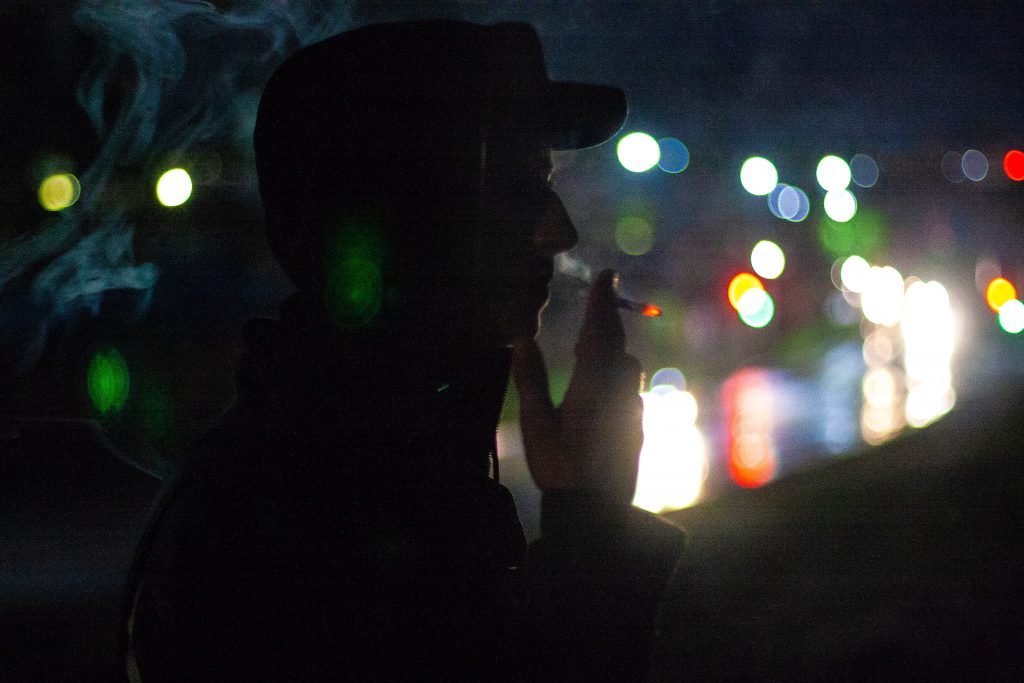
Types of Human Trafficking – Child Labour
When it comes to human trafficking facts, there is one undeniable truth: in every single form of human trafficking, you can find child labour. Children are victims of sex trafficking, forced marriage, forced crime (we see this manifest in forced begging and drug running), and forced labour, as well as child soldiers.
More than a quarter of slaves today are children (10 million), and this is due to the fact that children are easier to control and do not demand better conditions or wages. In fact, in communities where there is extreme poverty, parents often sell their own children into slavery.
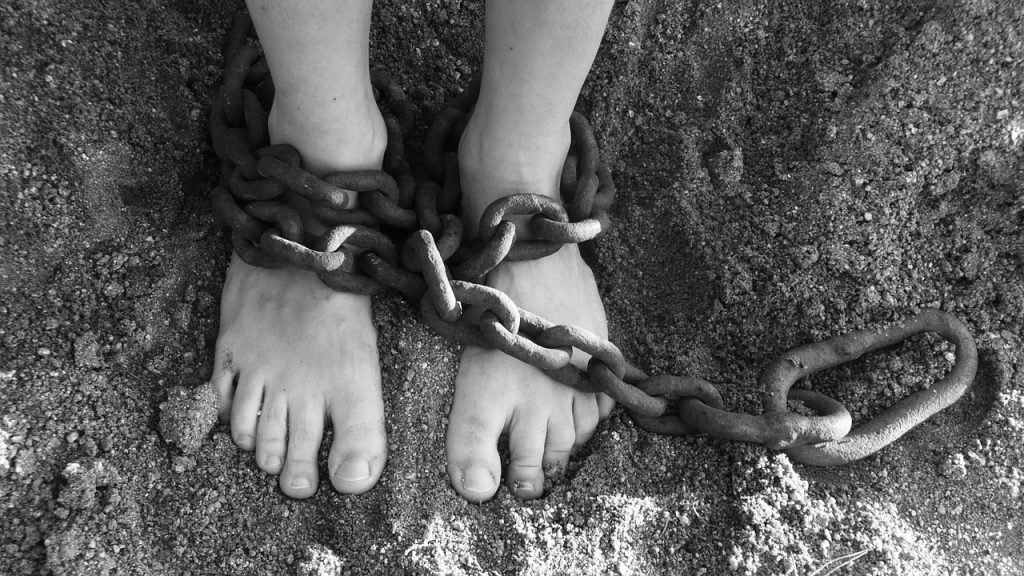
How to Spot Human Trafficking
Modern day slavery is a horrendous crime but fortunately, we are the ones who can stop it. Just knowing some basic human trafficking facts about how to recognise this crime could save a life, and there have been so many examples of members of the public recognising a victim of modern slavery and doing something about it.
I actually got a message recently from a girl that had read my article about human trafficking in nail salons, and she told me that she recognised every single red flag in the salon that she frequented. Because of my article, she made a call to the helpline provided and now the salon is being looked into – this girl could have just saved the lives of 5+ modern slavery victims!
Unfortunately, some victims of human trafficking are very hard to identify (such as domestic slaves), but others are hidden in plain sight, and so with just a little extra vigilance, we can spot them.
General Signs of Human Trafficking
A person looks uneasy, unkempt or malnourished. They might wear the same clothes every day (which may or may not be suitable for the weather or for their job) or have untreated injuries.
A person appears to be under the control of somebody else and reluctant/scared to speak to others.
A person is not sure of their address.
A person has no identifying documents on them.
A person is dropped off and collected from work, possibly with other victims and at unusual times.
Someone speaks for them or is seen paying for their travel.
All workers at a given place live at the same address and/or on the premises.
Signs That a Sex Worker is a Victim of Human Trafficking
Sex trafficking is almost impossible to spot as victims are forced to act smiley, friendly and compliant in order to keep the customers happy and unaware of the true situation. What’s more, while the women and girls working in backstreet brothels that aren’t signposted and are dirty inside are probably more likely to be victims than those in high-end establishments, that doesn’t mean that people aren’t being victimised on every rung of the ladder.
People who have visited the infamous red light district in Amsterdam talk about the presence of men who walk up and down the street, watching the girls and reprimanding them if they spend too long talking with someone or not ‘trying hard enough.’ While many girls working in Amsterdam are doing so of their own accord, it is naïve to think that they all are (or even that a majority are).
Signs to watch out for include:
Is she very closely guarded?
Does she appear scared or intimidated?
Is she transported to and from clients?
Is her English vocabulary limited and restricted to sexualised words?
Does she appear younger than she says she is, or younger than her pimp says she is?
Does she refer to her pimp as her ‘boyfriend’ or ‘daddy?’
Does she show signs of malnourishment and/or physical abuse?
Is she working on a dark country road in the middle of nowhere (indicating that she has been dropped off by her pimp)?
Does she have a tattoo of somebody’s name or a barcode? Pimps often ‘brand’ their victims with their name or a barcode.
Do her answers to questions seem evasive and/or scripted?
Does the person live in the brothel where the sex act is happening? Are there multiple female foreign nationals living at one address?
If you suspect that a sex worker is a victim of human trafficking then contact the Modern Slavery Helpline on 08000 121 700. You can remain anonymous.

Signs of Human Trafficking in Nail Salons
Budget Vietnamese nail salons in the UK have frequently come under fire for forced and bonded labour. Here are some of the red flags to look out for:
Do the prices seem too good to be true?
Is it a cash-only business?
Is there a manager that the workers seem fearful of?
Are the staff unable to take money themselves and instead insist that you pay the manager?
Do the staff seem withdrawn and unable to engage in conversation and/or speak English?
Is there a high turnover of staff?
Are there living quarters upstairs?
Do they seem properly trained?
If you suspect that somebody at a nail salon is a victim of modern day slavery then contact the Modern Slavery Helpline on 08000 121 700.
To read more about human trafficking in nail salons then read my article about it here.

Signs of Human Trafficking in Car Washes
Budget car washes are also places where young men, often from Eastern Europe, become victims of forced and bonded labour in the UK. Signs to look out for include:
Are the prices extremely low?
Is it a pop-up car wash?
Do the staff lack proper protective equipment?
Are there living quarters on the premises (look out for nearby caravans)?
Is it a cash-only business?
Does the manager handle all payment?
Is there an absence of receipts?
Does the general quality of the site seem low?
Can the workers speak English?
Are they allowed to accept tips?
Is there an overly watchful manager?
If you suspect that somebody at a hand car wash is a victim of modern day slavery then contact the Modern Slavery Helpline on 08000 121 700.
To read more about this particular form of modern day slavery then read my article about modern slavery in hand car washes.
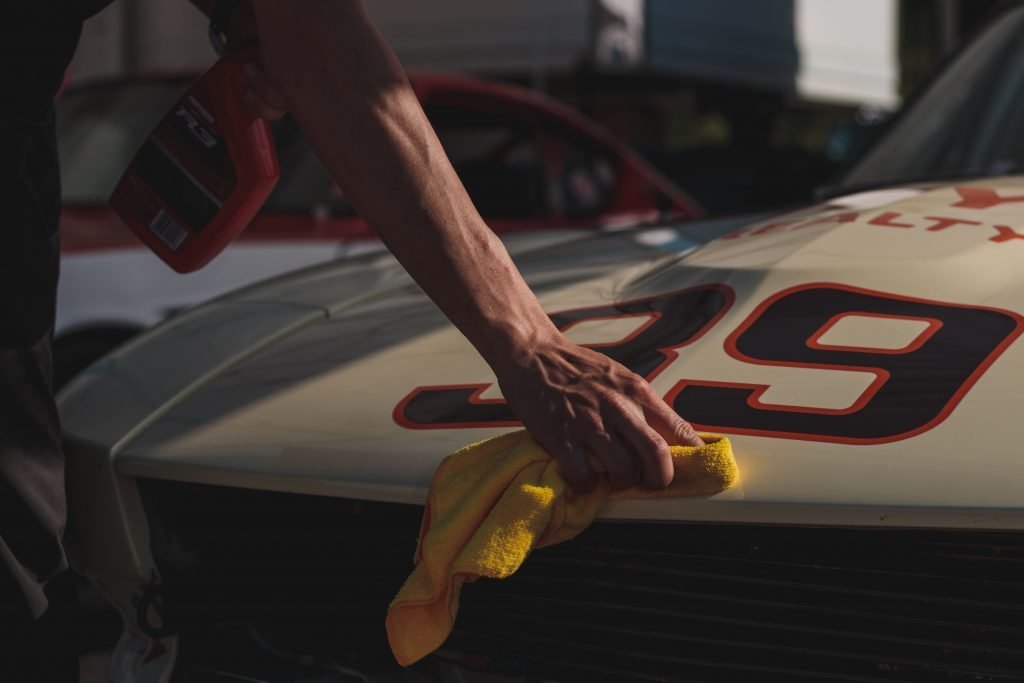
Signs That a Person May Become a Victim of Forced Marriage
Victims of forced marriage are usually very hesitant to reach out and ask for help themselves so it is imperative that we learn to recognise the signs that somebody is at risk, especially those working as teachers, doctors, police officers, airport staff etc.
Girls account for the majority of victims (75%).
1/3 of victims are under 18.
The people most at risk are of Pakistani origin (44% of cases), Bangladeshi origin (9% of cases) and Indian origin (6% of cases).
A victim may suddenly become withdrawn and stop seeing friends and replying to messages.
There may be signs of physical violence, particularly bruises on the upper arms from being grabbed.
The victim may go on a sudden holiday (80% of forced marriage in the UK happens during school holidays so airport staff should be extra vigilant during this time).
If you suspect that somebody is a victim of forced marriage or at risk of forced marriage then contact the Forced Marriage Unit on 020 7008 0151 or email fmu@fco.gov.uk, or call the helpline at Karma Nirvana on 0800 5999 247.
For more statistics on forced marriage in the UK, click here.
Signs of Human Trafficking in Airports
While you’re waiting to board a plane, you have a lot of time to look at the people around you – just being aware of a few signs to look out for could save someone’s life.
Is someone unkempt, perhaps in ill-fitting clothes and with few personal possessions, while their travel companion is well-dressed?
Does their communication seem scripted or is there inconsistencies with their story? Do they defer attempted conversation to their companion, allowing their companion to speak for them?
They can’t move freely in the airport or on the aeroplane, or they are being very closely guarded by their companion.
They seem scared or nervous around airport staff.
More information on signs of human trafficking in airports can be found here.
If you suspect that someone in an airport is a victim of human trafficking then report the situation to airport or flight staff immediately.

And now we’ve reached the end! I will continue to update this article as I discover more information about ways of spotting and reporting human trafficking, and if you have any more information that you think should be included then please let me know in the comments section so that I can add as necessary!
Thank you so much for reading this! Together we can help fight this terrible crime!
If you liked this article and would like to support my work, please click the button above to donate a couple of bucks and buy me a coffee. The ad revenue that I receive on this website is minimal, so support from my readers enables me to keep creating content that you (hopefully!) love to read.
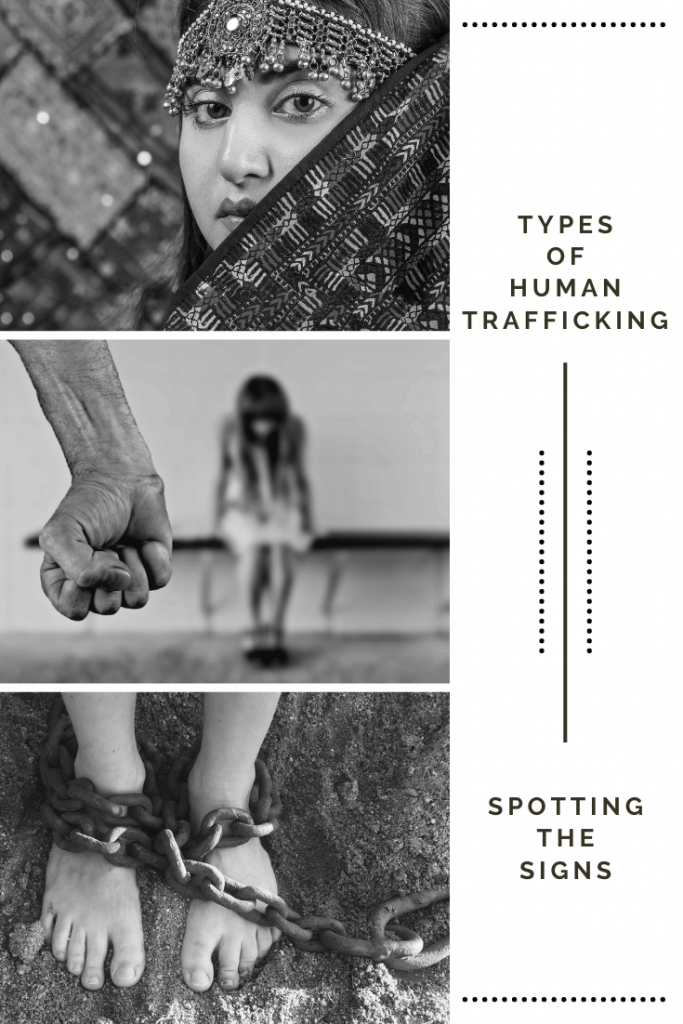

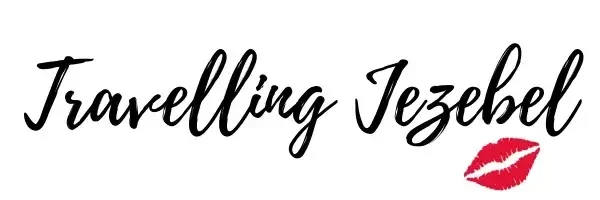
Thanks for this post.. Scary but so real and we don’t think about it enough.. The stats are really scary and I had no idea they were so high! Very eye opening.
We as backpackers and customers of your lingerie shop could help free girls and women from sex slavery.
What if, on specific days we pay a Euro extra for our order.
Then when enough Euros add up to send a bra, you could send one to the ‘free the girls organisation”, as a gift from all of us.
https://freethegirls.org/
“What if you could help bring freedom to survivors of sex trafficking with something surprisingly simple? “
I was thinking about this!! I was actually thinking about returns and refunds – instead of me sending the items back to the warehouse, I could donate them to girls in need…I’d need to think more about the logistics of it because I’d end up going bankrupt if I wasn’t careful, but there it’s definitely something worth thinking about! Your idea is great as well, I might add an optional button for that!
Tell the ones who want to return things to send them directly to the ‘free the girls’ charity instead of to you, unless they say the item has a major defect.
You would probably end up having to refund them anway even if you see the item they return.
And, anything bought with donations could be shipped directly to ‘free the girls’ from the warehouses so wouldn’t cost you anything.